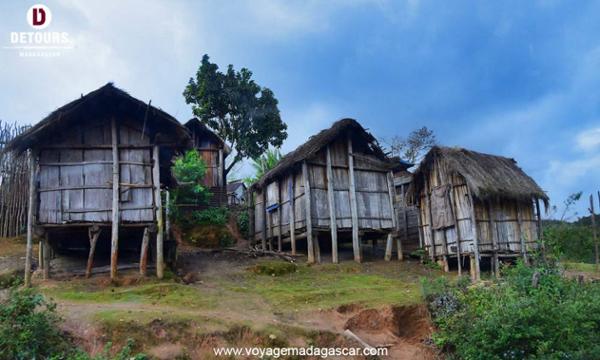
Malagasy architecture: The construction of the "casa"
Madagascar boasts a diverse architecture. In each part of the island, inhabitants adapt their buildings based on available resources. Whether in size, shape, or materials used, each architectural style is unique. Trekking through Madagascar is a great way to discover this architecture.
Traditional houses in the highlands
In the Highlands, most houses are made of raw earth, a technique introduced by Jean Laborde in 1831. The roofs are made of straw or tiles. Often called “trano gasy” (Malagasy house), the traditional Merina house is one story high, with a wooden veranda supported by columns. In the past, this architectural style was the same in both urban and rural areas. However, nowadays, most houses in cities have become modern, while those in the countryside remain traditional.
The construction of casa on the coasts
In the East, casa rely heavily on the use of ravinala (the traveler’s tree), a dominant plant in this part of Madagascar. Known as trano falafa, every material used for building these houses comes from the ravinala. The raty refers to leaves woven together and used for constructing the walls. The falafa, large dried leaf stems of the ravinala, are used for the roof. The rapaka (the tree trunk) is used for the flooring. This type of house is built on stilts.
In the Southwest of Madagascar, traditional houses are built using rushes. On the western side, palm trees are the primary construction material for casa. In the North, raphia is preferred, as the plant dominates the region. Raphia is a species of palm that can grow up to 20 meters in length. Its large leaves, the biggest among all palms, make it particularly well-suited for house construction.

Rituals surrounding house construction
For Malagasy people, there are important rituals to follow before building a house, including consulting an astrologer (mpanandro). The mpanandro determines the most auspicious day to begin construction and inaugurate the house. According to tradition, failure to respect this ritual brings misfortune to the family.
When invited to a Malagasy family home, visitors should pay attention to specific arrangements, as everything has a designated place and meaning. Understanding these customs is important.
Malagasy people place significant importance on cardinal points. All traditional Malagasy houses must have their doors facing west, the direction of the setting sun. This orientation is believed to allow the house to benefit from the sun’s rays until sunset.
Regarding the north, Malagasy people consider it a symbol of power and honor. For this reason, the parents’ bed is placed on the northern side of the house. When sleeping, the head must always point north or east, with the feet directed south. This practice stems from the belief that happiness and wealth come from the north, while the south is considered a source of misfortune.
As the sun rises in the east, it is forbidden to go against it; otherwise, the family will be deprived of blessings.
